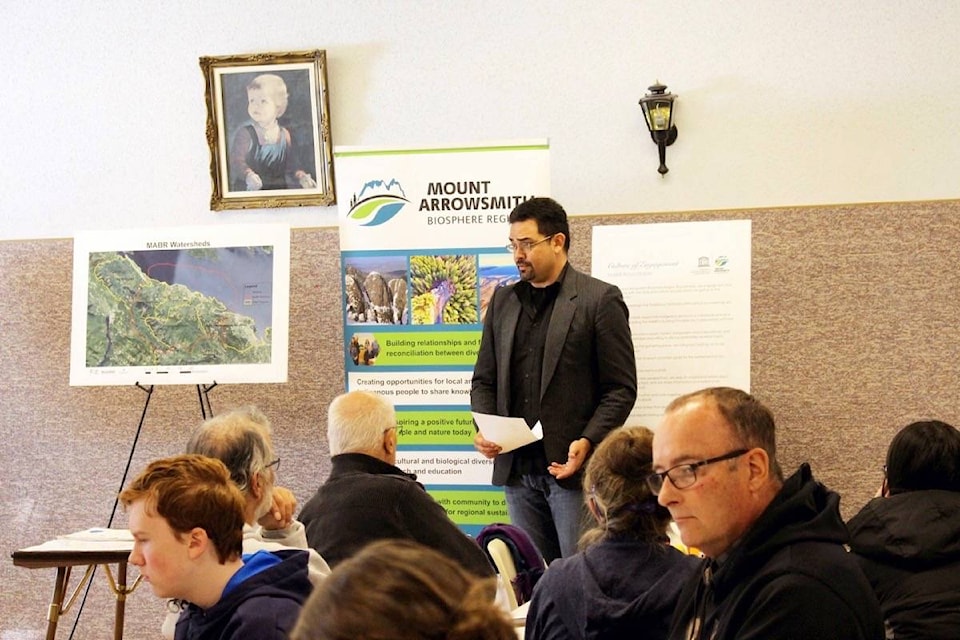The Mount Arrowsmith Biosphere Region held its first watershed visioning workshop last week, with the hope of hosting bigger events in the future.
On Friday (Nov. 3), the Mount Arrowsmith Biosphere Region Research Institute hosted the event to identify challenges, plan solutions, and set targets for the region’s watersheds.
Eli Enns, a Canadian political scientist, was the speaker for the first half of the event. Enns is a committee member for the Canadian Commission for UNESCO Man and the Biosphere National Committee.
Enns spoke to a room of about 50 people, which included school children, about what UNESCO (United Nations Educational, Scientific and Cultural Organization) biosphere regions are. Enns said UNESCO is about peace-building through education.
“The UNESCO biosphere reserves are absolutely the best place to have discussion about peace and friendship, to have a conversation about how can you live in a more balanced way with one another… how can we live better together and more sustainably.”
Enns said what he finds interesting is research by the UN Convention on Biological Diversity that revealed while biodiversity was going extinct, so were languages and cultures.
“In places here, in the Mt. Arrowsmith Biosphere Region, how much of the original ecosystems are left as they were 200-300 years ago? How much of this biosphere region is still intact? Then the parallel (question), how much of the language is left of the people who were here 10,000 years ago? How much of that language and culture is also here?”
Enns said languages evolve just like biological diversity, adding while the language and cultures disappear, so does people’s detailed knowledge of places. He said those languages have intimate and critical knowledge of the region.
Protecting, preserving and promoting language, Enns said, goes hand-in-hand with protecting, preserving and promoting biological diversity.
Enns said when talking about watershed governance and watershed management, people need to think about their vision for the watershed, adding water is a truly critical element to life. He said the vision is a broad statement of where the region wants to go in terms of preserving and protecting biological diversity.
“In this case, what do we want for the Mt. Arrowsmith Biosphere Region? When we’re all gone, what do we want to leave for whomever is going to inherit this place? What does it look like?” Enns said.
Parksville Mayor Marc Lefebvre was in attendance for the event and said the challenge for watersheds is in terms of policy decision-making. Lefebvre said there are a lot of players involved, such as governments and the people living in the region.
“In your vision, is there an organization that could deal with that, because of all of the players involved?” Lefebvre asked Enns.
In response, Enns said the political-societal relationships are just as dynamic as the biological-ecological relationships when it comes to preserving and protecting watersheds.
For more information on MABR, visit www.mabr.ca.
